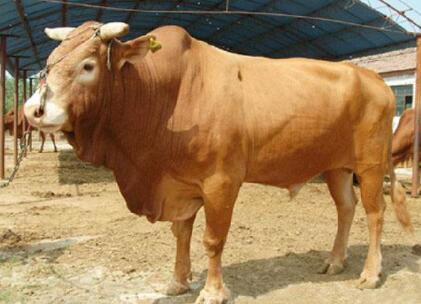
- Online pavilions:
- Veterinary medicines
- Veterinary raw materials
- Other
- Asia
- America
- medical instruments

News briefing: Angus cattle are native to the counties of Aberdeen, Angus, Banff and Kincardine in northeastern Scotland, hence the name. It is closely related to the British curly Galloway cattle. Currently distributed around the world, it is one of the main cattle bre
Black hornless beef cattle. Known for many years as Aberdeen Angus (Aberdeen Angus), it originated in northeastern Scotland and is closely related to the curly-coated Galloway, which is sometimes called the oldest breed in Britain. At the beginning of the 19th century, many breeders including the famous Hugh Watson improved this variety and fixed its current body shape. The appearance is characterized by black without horns, short and strong body, good meat quality, and high meat yield. Purebred or hybrid Angus steers maintain a high reputation in major British and American meat exhibitions. This species was introduced from Shandong Province in 2000. At the end of the 20th century, it was often used for outcrossing and hybridization. Brangus is a breed of Brahman and Angus bred and is known for its resistance to heat.
Variety source
Angus cattle are native to the counties of Aberdeen, Angus, Banff and Kincardine in northeastern Scotland, hence the name. It is closely related to the British curly Galloway cattle. Currently distributed around the world, it is one of the main cattle breeds in the United Kingdom, the United States, Canada, New Zealand and Argentina. It is distributed in a certain number in Australia, South Africa, Brazil, Denmark, Norway, Sweden, Spain, Germany and other countries.
Characteristic
Angus cattle has black coat and no horns as its important characteristics, so it is also called hornless black cattle. Some cattle have leukoplakia under the abdomen, umbilicus and udder, and the occurrence rate is about 40%, which is not regarded as a breed defect. The coat of red Angus cattle is red, and there is no big difference in body structure and production performance from black Angus cattle. Angus cattle are small in size, low in body drive, compact and strong. The head is small and square, the forehead is wide and the top of the forehead is protruding, the eyes are big and bright, flexible and energetic. The mouth is wide, the mouth is deep, the upper and lower lips are neat, the bridge of the nose is straight, the nostrils are larger, the nose is wider, and the color is black. The neck is medium long and thick, the skin is obvious, the backline is straight, the lumbar sacrum is full, the body is wide and deep, cylindrical, the limbs are short and straight, and the distance between the two forelimbs and the hind limbs is wide, and the body shape is rectangular. The body is full of muscles, the body is smooth and plump, the waist and shoji are well muscled, and the thigh muscles extend to the hock. The skin is soft and elastic, and the coat is bright and moisturized.
Production performance
Angus calves have an average birth weight of 25-32 kg and have good weight gain performance. Under the condition of natural breastfeeding, the 6-month-old male calves have a weaning weight of 198.6 kg and the female calves 174 kg; the year-old weight can reach 400 Kg, and reach the required carcass grade, with a daily weight gain of 950-1000 grams. Angus adult bulls have an average live weight of 700 to 900 kilograms, up to 1,000 kilograms in height, and 500 to 600 kilograms for cows. Adult male and female cows are 130.8 cm and 118.9 cm in height, respectively.
Meat production performance
Angus beef has good performance, early maturity, easy fattening, and high feed conversion rate. It is considered to be the best meat quality among various specialized meat varieties in the world. Angus beef has good carcass quality, high net meat rate, obvious marble pattern, and slaughter rate of 60% to 65%. According to a research report in Florida in 2003, 3937 Angus steers with an average age of 14.5 months have gained 1.3 kg ± 0.18 kg during the fattening period, carcass weight 341.3 kg ± 33.2 kg, and fat thickness 1.42 cm ± 0.46 cm. , The eye muscle area is 76.13 square centimeters ± 9 square centimeters, the feed conversion rate during the fattening period is 5.7 kg ± 0.7 kg per kilogram of feed; the bones are relatively thin, accounting for only 12.5% of the carcass body weight. Angus beef is very tender and flavorful, and it is the only beef breed in the world that uses the breed name as the brand name for the meat.
Milk production performance
Angus cattle has always been known for its excellent maternal characteristics and good breastfeeding ability. Angus cow has a compact udder structure and strong lactation capacity, making it an ideal female line in the production of beef cattle. According to Japan’s Tokachi Breeding Farm, cows are milked for 173 to 185 days, the milk yield is 639 kg, and the milk fat rate is 3.94%.
Reproductive performance
Angus cows are sexually mature at 12 months of age; well-developed Angus cows can be mated at 13 to 14 months of age. The calving age of the first child is 2 to 2.5 years, and the calving interval is generally about 12 months, which is shorter than other beef cattle breeds. The calving interval is 10 to 14 months accounting for 87%. The estrus cycle is about 20 days, and the duration of estrus is 21 hours on average; the conception rate in estrus is 78.4%, and the pregnancy period is about 280 days. Cows have good continuous production and longevity, and can be used to 17-18 years old. Angus cattle are small in size and light at birth, and dystocia is rarely seen.
Variety characteristics